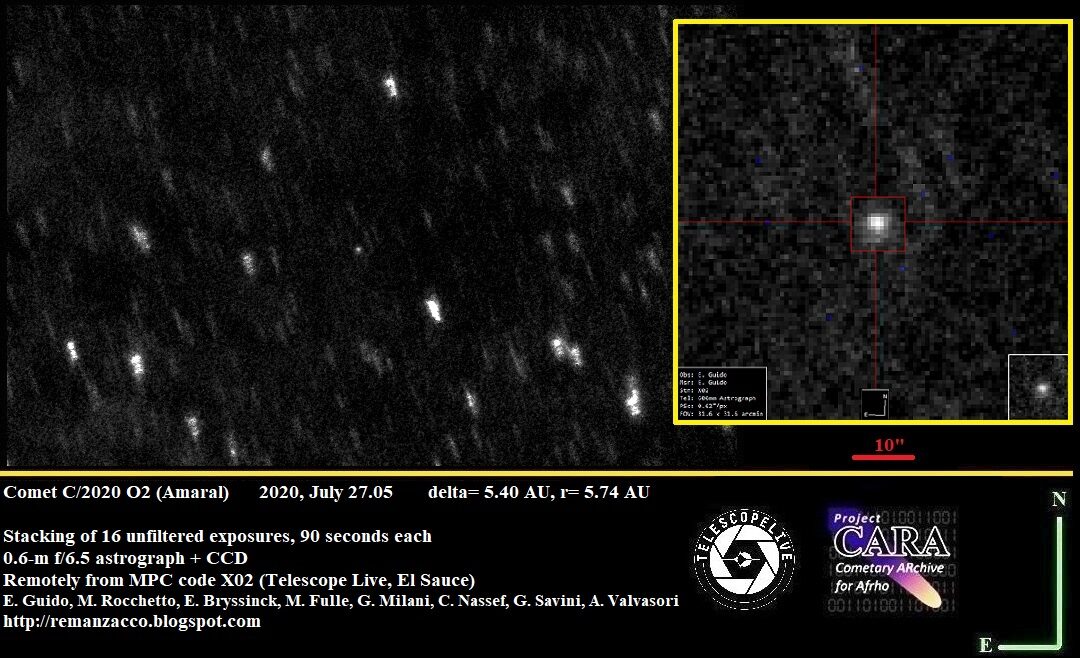CBET 4822 &
MPEC 2020-P10, issued on 2020, August 02, announce the discovery of a comet (magnitude ~18) by Leonardo S. Amaral (Rio de Janeiro, Brazil) on three 60-s CCD exposures taken on July 23 with a 0.3-m f/4 reflector.
The new comet has been designated C/2020 O2 (Amaral).We performed follow-up measurements of this object while it was still on the PCCP webpage.
Stacking of 16 unfiltered exposures, 90 seconds each, obtained remotely on 2020, July 27.05 from X02 (
Telescope Live, Chile) through a 0.6-m f/6.5 astrograph + CCD, shows that this object is a comet with a diffuse coma about 8" in diameter (Observers E. Guido, M. Rocchetto, E. Bryssinck, M. Fulle, G. Milani, C. Nassef, G. Savini, A. Valvasori).
Our confirmation image (click on it for a bigger version)

© Remanzacco Blogspot

Comment: Another meteor fireball flashed over southern Spain a week ago.